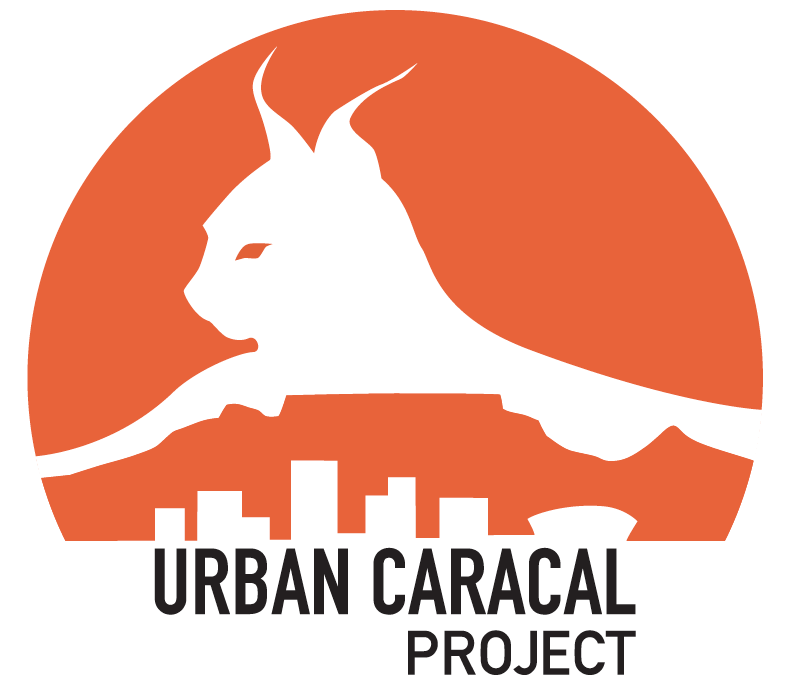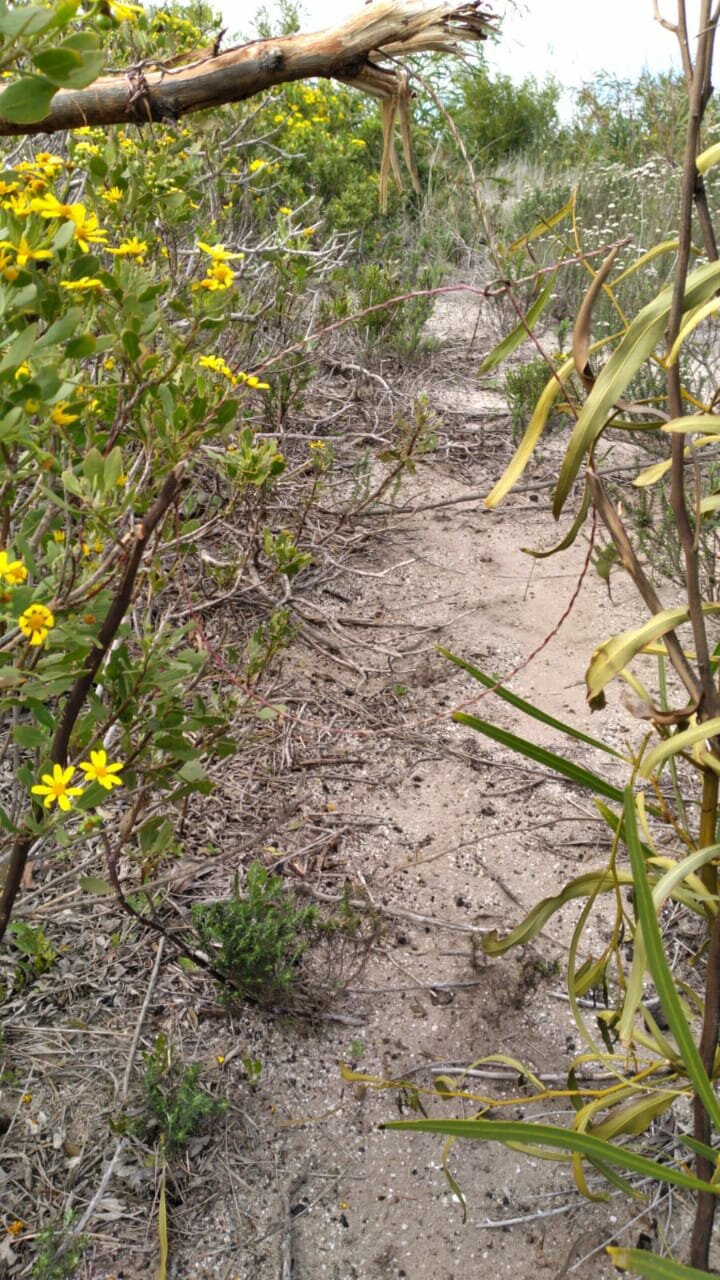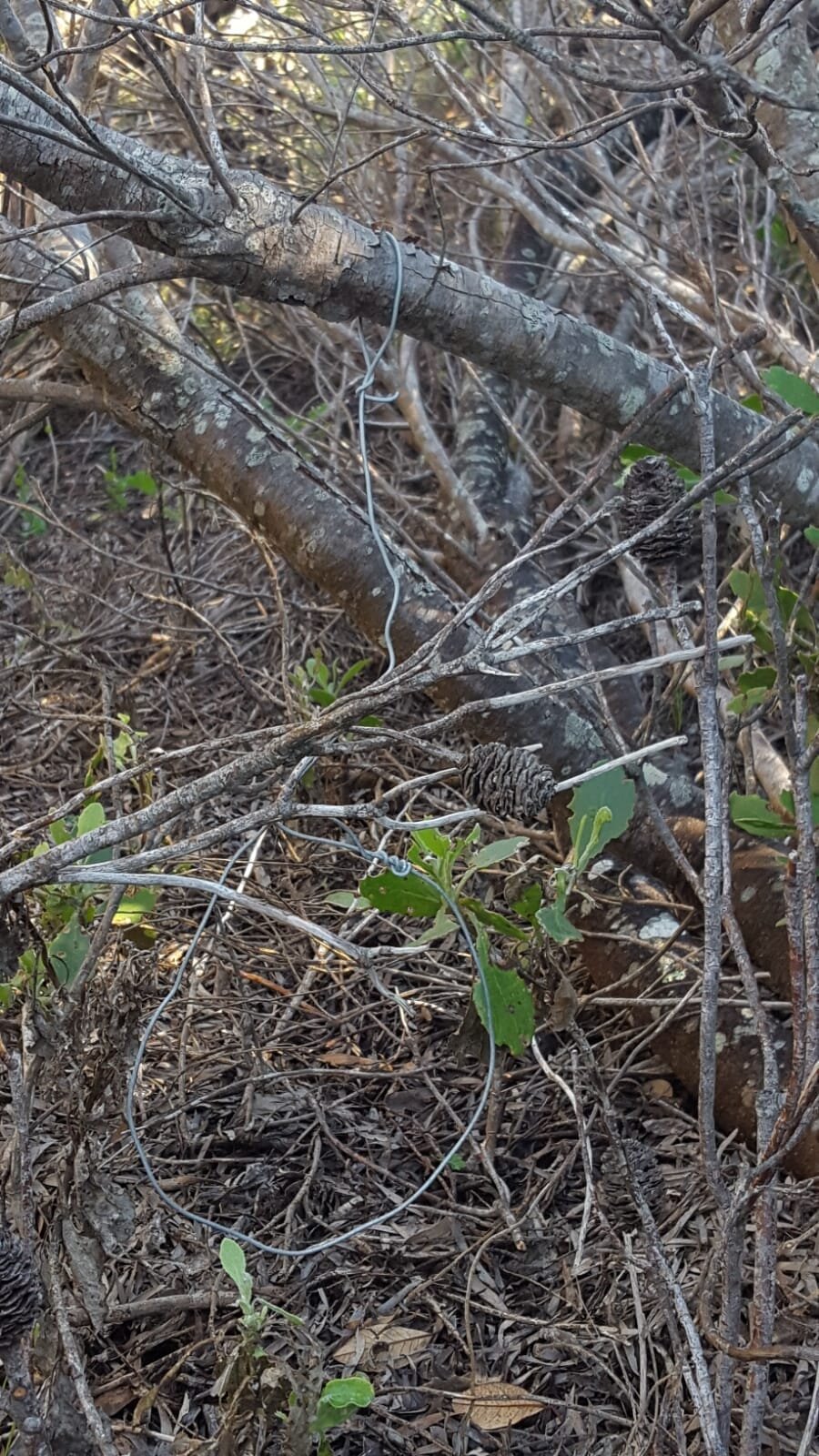Poaching is a growing problem for our wildlife in Table Mountain National Park and we may only have detected the tip of the iceberg. Poachers are either supplementing their own sustenance with bushmeat, or selling the animals to others for use as bushmeat or medicinal purposes. As a result, our beautiful wild animals, including caracals, are being killed. The Urban Caracal Project has recently become involved in eradicating snares in the Table Mountain National Park in conjunction with SANParks and the Sanparks Honorary Rangers. But the more eyes on the ground, the better, and so we are asking for your help.
Send any snare reports to the Urban Caracal Project via WhatsApp/call: 079-837-8814
If you find a live or dead wild animal caught in a snare outside of Cape Town, call the Snare Free hotline: 076 127 8485 (more info: snarefree.co.za)
Alternatively, if the animal is alive, directly contact the CoGH SPCA on 021 700 4158/9 (o/h) or 083 326 1604 (a/h). Immediately leave the area and get out of sight of the animal so as not to cause it even more distress as it may further injure or kill itself if it fights to get out of the snare.
How, what, and why?
The most common poaching technique used are snares, although we have also detected gin traps and the use of hunting dogs. Snares target wildlife indiscriminately and can capture species such as grysbok, guinea fowl, dassies, mongooses, and caracal, although domestic dogs and cats may also be caught. Materials used vary, but include electrical wire, nylon rope, fishing lines- anything that can be used to create a noose and catch animals. The snares are placed on game trails, and may be on the ground itself to catch animals around a foot, paw, or leg, or elevated to catch animals around the neck. Snares may also be placed on tree branches to catch dassies. Often there may be sticks used to guide the animals into the snare, or to help prop up or disguise the snare. See pics below for what to look for.
Where are people poaching?
Snares are placed on game trails very close to residential areas including in Fish Hoek, Dassenberg, the Noordhoek wetlands and sports field area, and even recently, off Tafelberg road in Front Table. But these are only the places where they’ve been detected. Recently, in a single outing, SANParks rangers recovered more than 40 snares from the Noordhoek wetlands just in the area between Lake Michelle and Masiphumelele!
How can you help?
If you see any suspicious activity, snares or materials that could be used to make snares, please remove it and any associated materials, and report your findings (with an exact location if possible) to us. We will notify SANParks so they can send trained rangers to patrol an area. If you are a local homeowner living adjacent to natural areas, keep any spare wire, including that used to maintain electrical fences, safely locked away.
Here are photos so you know what to look for. One thing is evident - the snares can be exceedingly difficult to see:
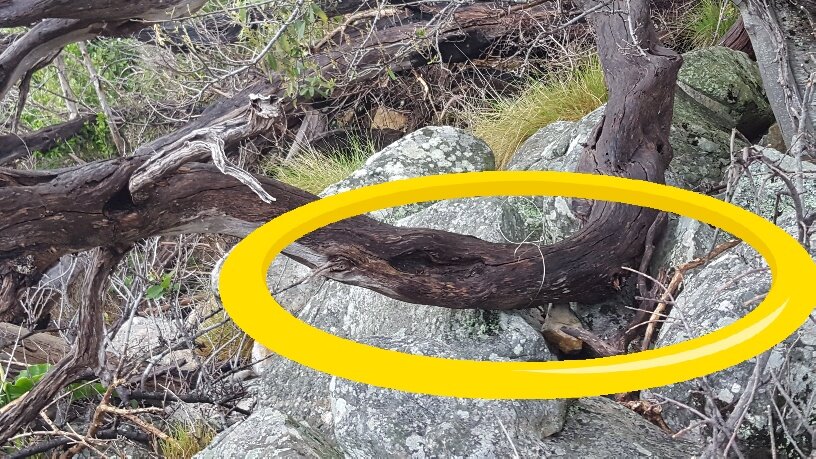
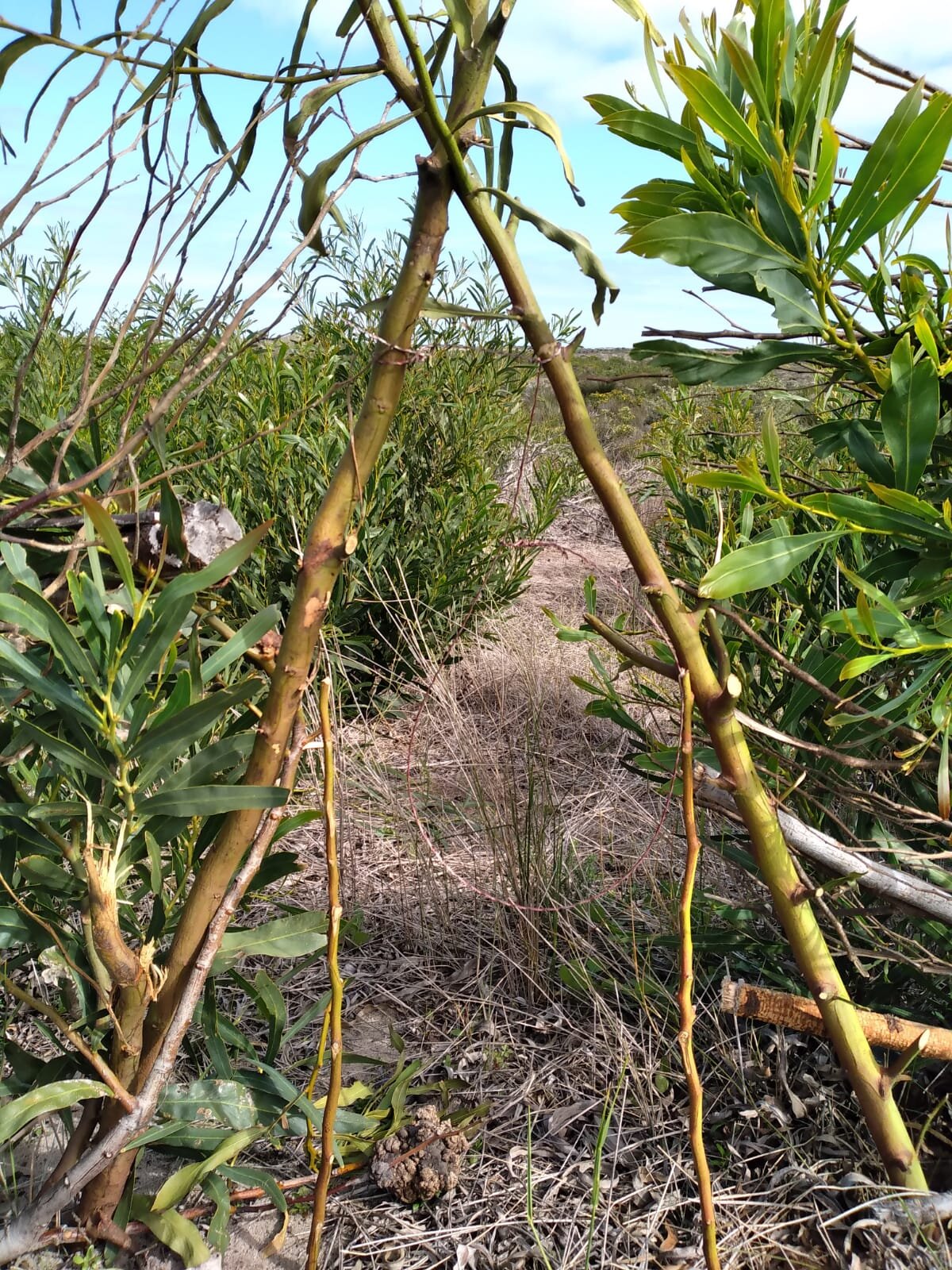
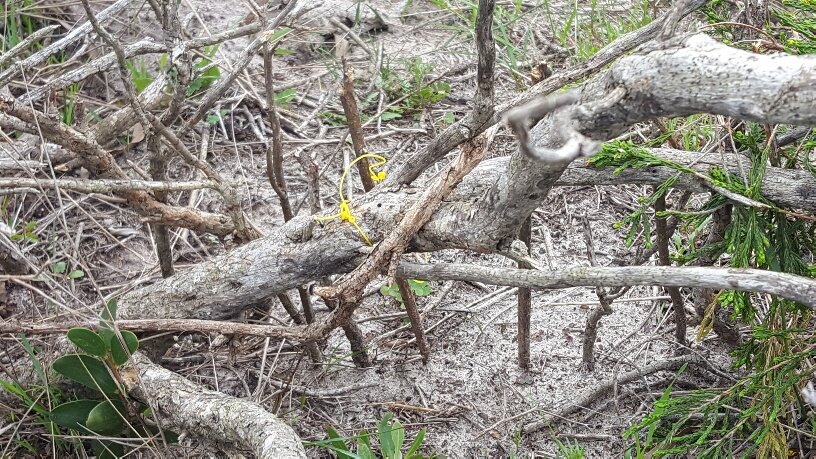
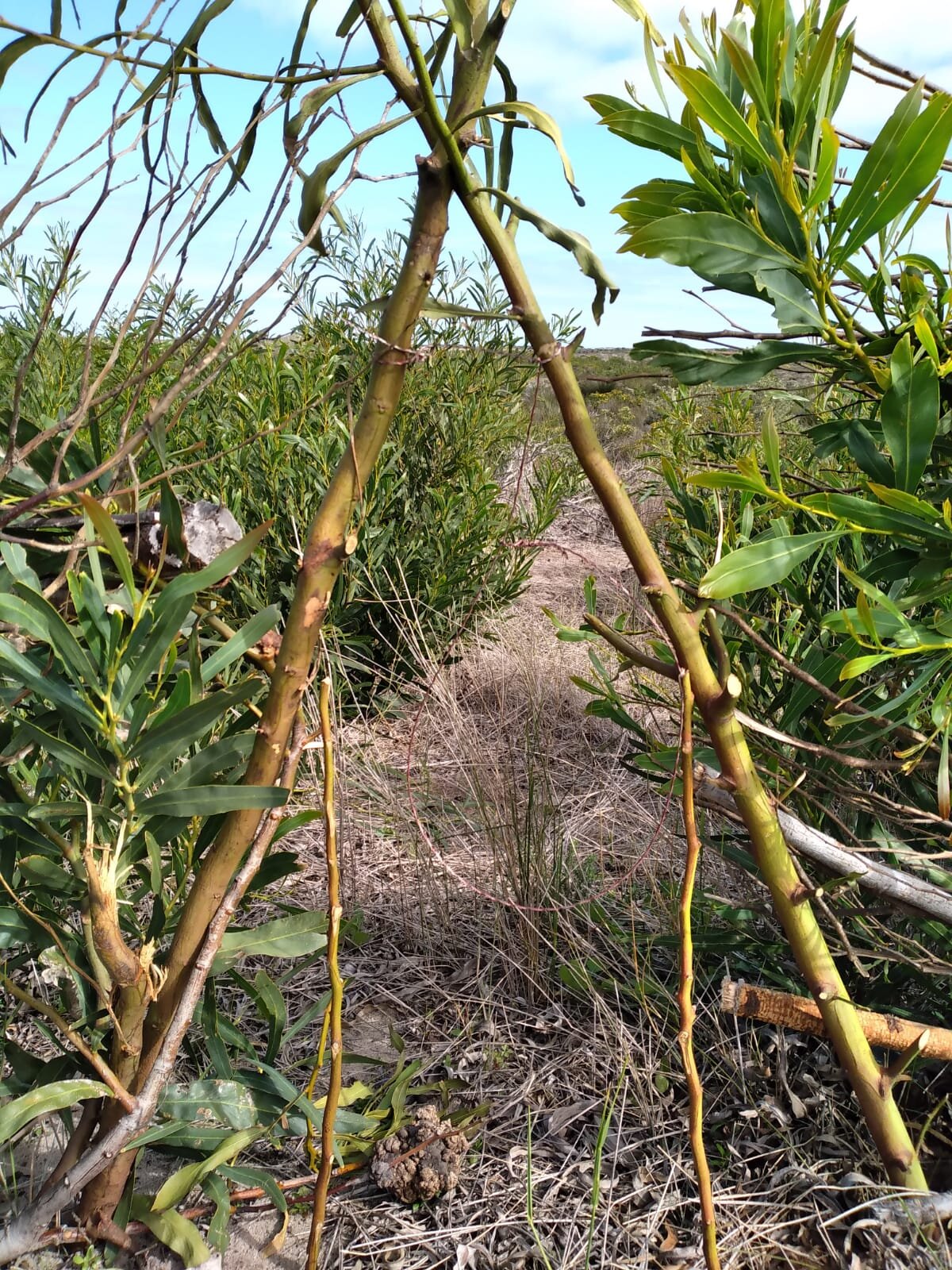
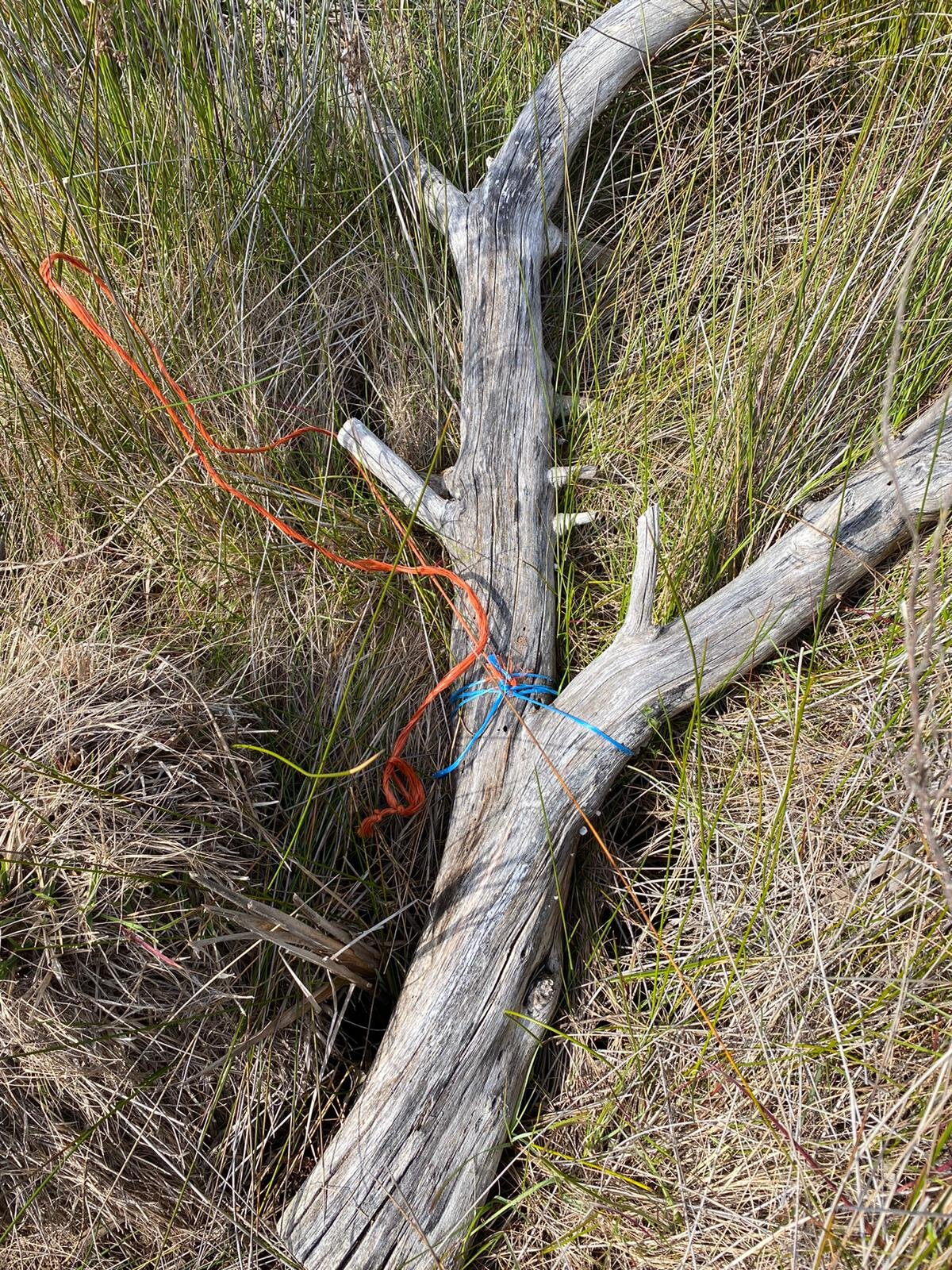
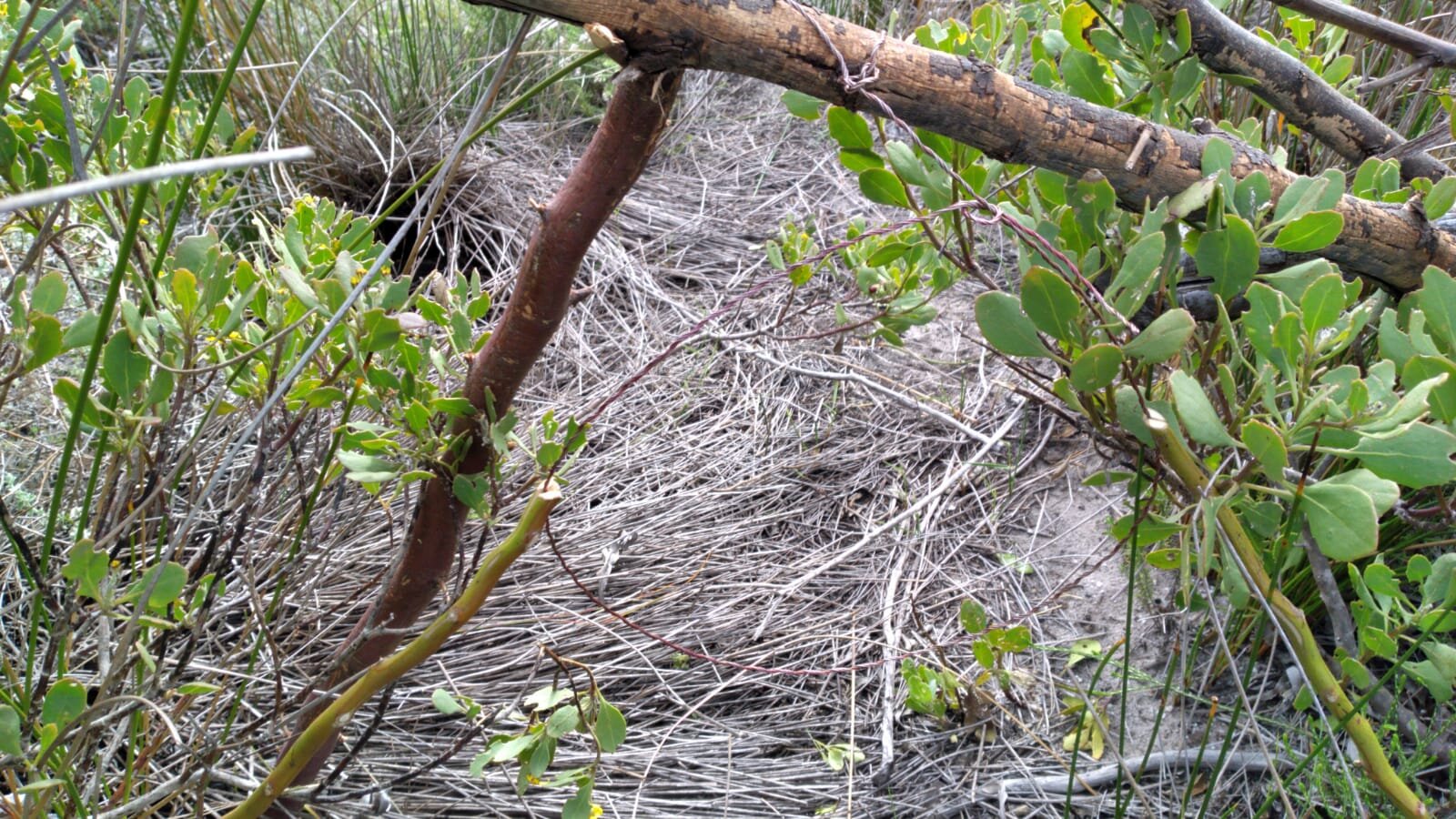
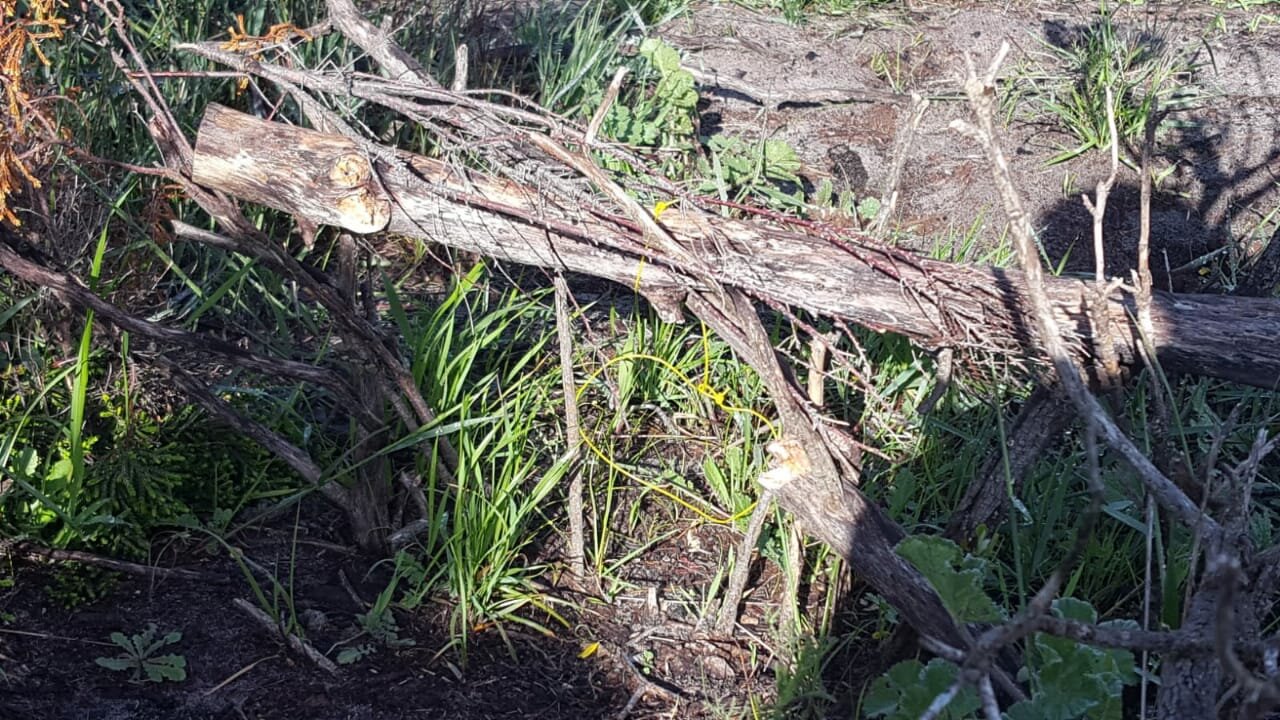
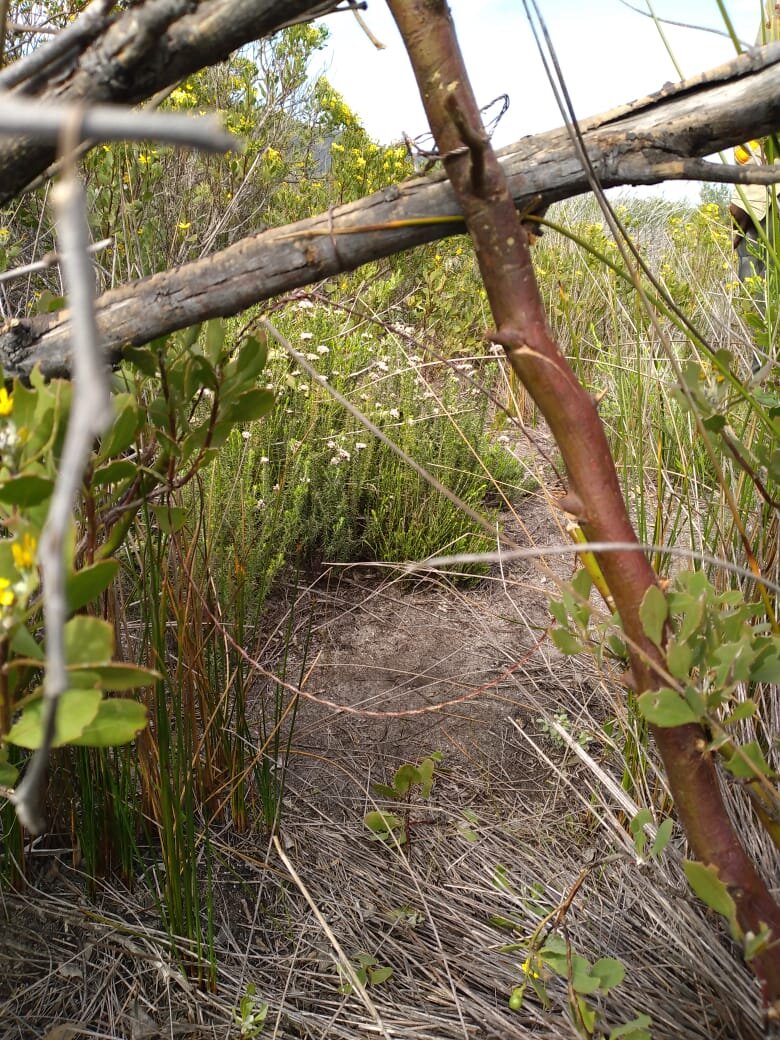

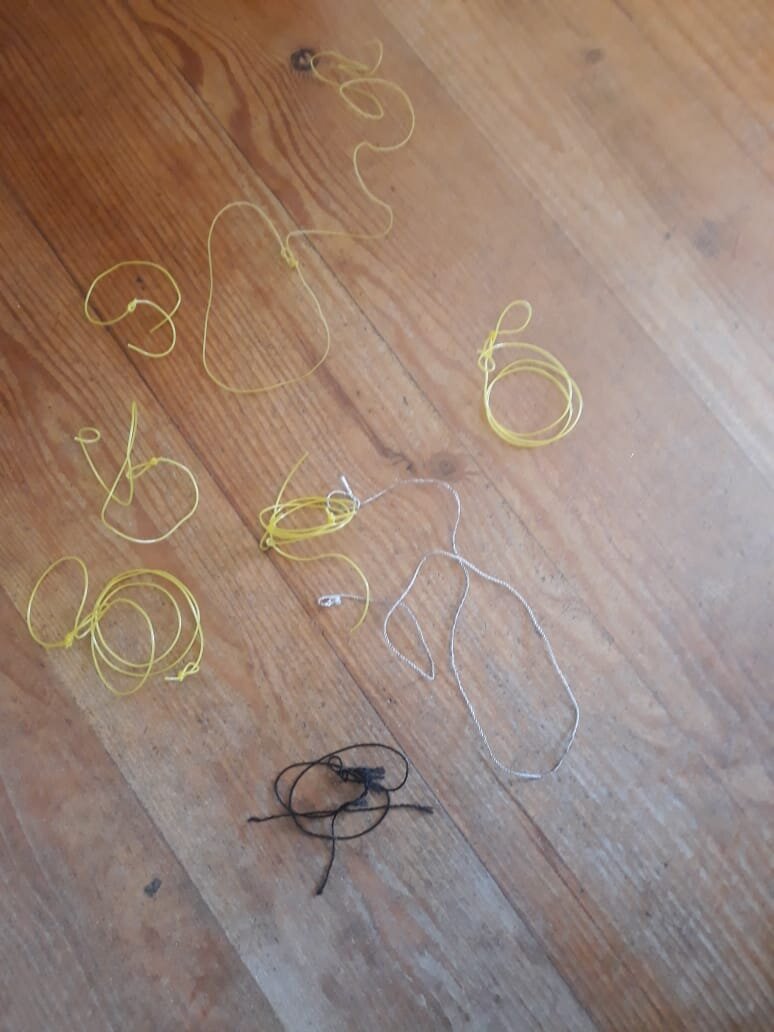
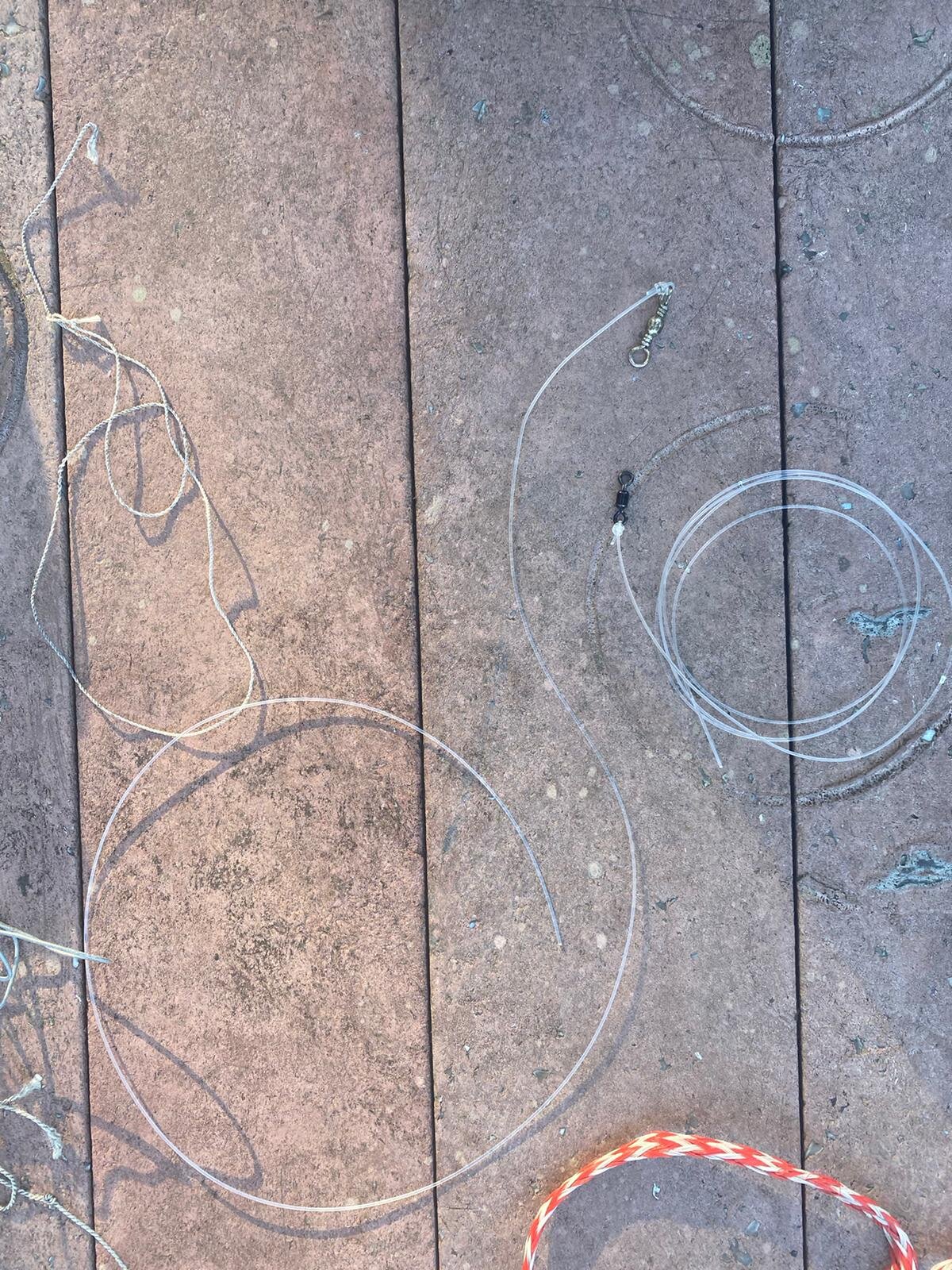
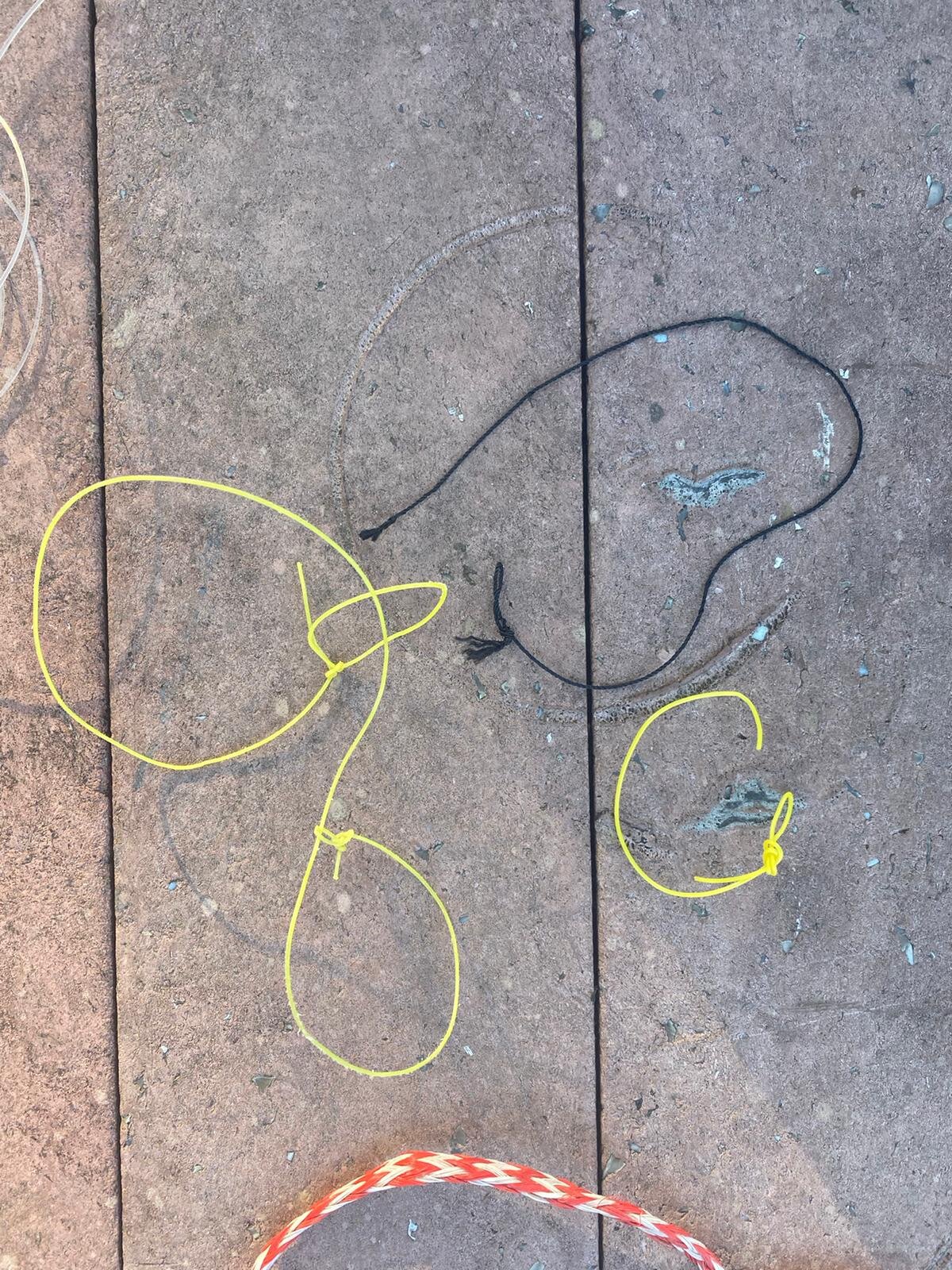
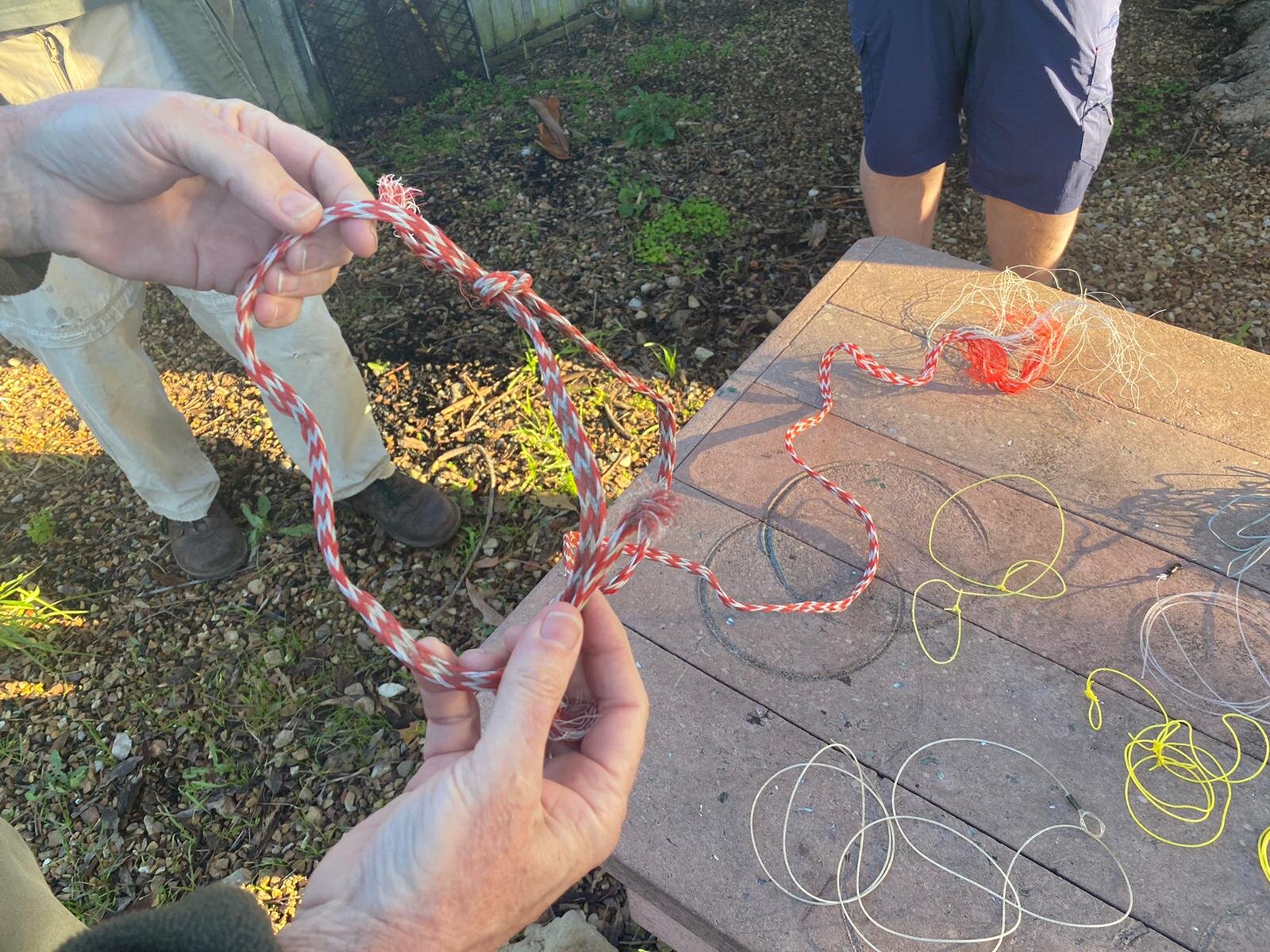
However, we do not want to encourage people to walk through the bush off trail and risk damaging vegetation, especially if you don’t know exactly what to look for. The best we can ask is that while you are out enjoying a hike, keep your eyes peeled for anything suspicious.
Resources
The Snare Free initiative is a collaborative network of conservation, animal welfare and volunteer organisations in the Western Cape. They have adopted a multi-pronged approach to help both animals and people thrive in the ecosystems we share. Read more: snarefree.co.za
For additional reading, see this brochure prepared by Cape Leopard Trust in conjunction with Cape Nature. But please remember, within Table Mountain National Park, most of the poaching is occurring directly in park lands. Cape Leopard Trust also has great photos and information for those outside of the Cape Peninsula, which can be found here.
